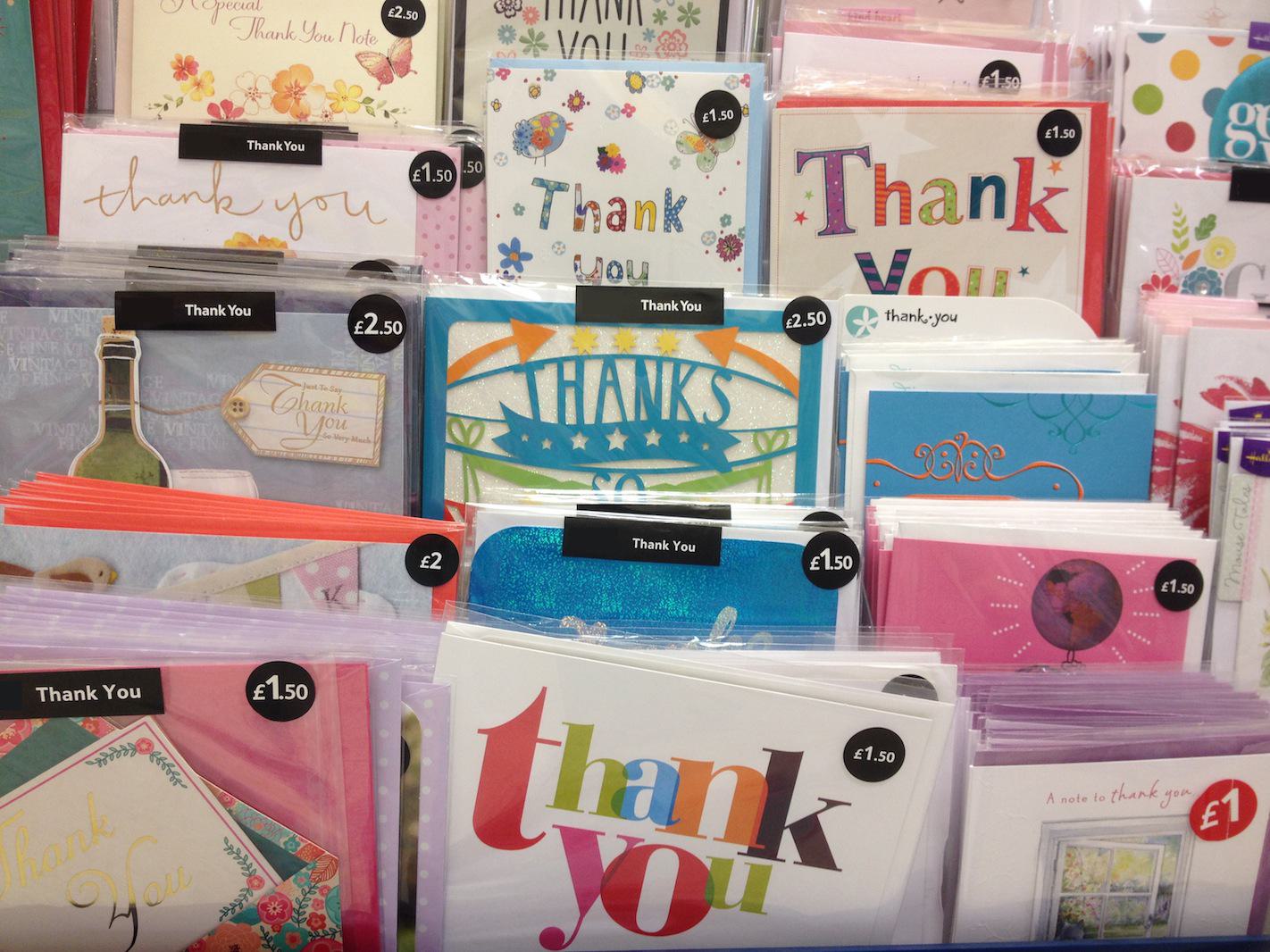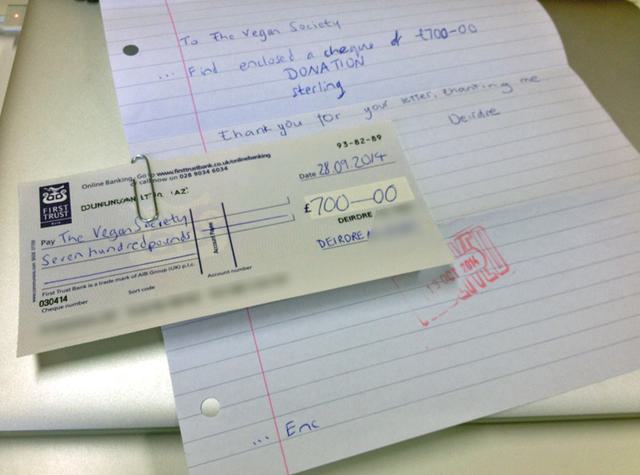Does thanking really work?
Observations from a new, fresh fundraiser.
- Written by
- Laura Croudace
- Added
- October 23, 2014
How many times a day do you say thank you?
We do it without realising. We thank people for holding the lift doors open, for moving out of the way when we go for a run, we thank the courier for our package. We thank people for compliments, such as ‘Laura, the cheesecake you brought into the office today was the best cheesecake I’ve ever had!’ (The latter happens a lot as I’m known in our office for my vegan cheesecakes.)
My point is: we are saying thank you as people, strangers, passers-by, all day long. But, as fundraisers, do we thank enough, in a way that is effective?
During a fundraisers’ networking event last Thursday my group started talking about thanking our donors. I’ve spoken at this event in the past about thanking and how I, as a donor myself, appreciate a personal thank-you letter,
Nothing gripes me more than when you get an auto-generated, bog-standard email ‘thanking’ you for your new direct debit or one-off gift. As a fundraiser, I try not to criticise other charities too much, but it’s hard not to! It’s my profession, my passion, my life so I do it without realising a lot of the time. You’ll be pleased to know I’ve managed to break the habit of moving collection tins to a more donor-accessible area at till points, whilst shopping or grabbing a latte...
In our meeting, I asked my friend Amy how she thanks her donors in her charity. Amy works for a medical charity with an income of £3.5 million. I was shocked when she explained that at her organisation they have a strict routine when it comes to thanking. You type all your thank-you letters before the coming Tuesday, then you email them to head office. Head office checks them for ‘errors’, in the process editing them until they’re so dull and unrecognisable they might as well have come off a head-office template. They then send them out, printed and impersonal, on the Thursday.
Until this moment, I was brimming over with excitement as an hour before something lovely had happened in my office. I’d received a cheque for £700 to help with our work, just because I’d thanked someone the month before. On the flip-side to Amy’s experience of donor care, I write every thank-you letter by hand with a fountain pen, different coloured inks suited to different messaging: I like to use psychological colour theory as much as possible in my work.

Thanking should be fun, colourful, vibrant, exciting and, above all, personal. Imagine you hear your letterbox clatter, you go to it and you see three envelopes waiting for you to peek inside. A white one that’s printed and franked, a white envelope that’s hand-written and franked, or a purple envelope with a turquoise handwritten address and a proper Royal Mail gold first-class stamp. Which excites you the most?
Almost nobody sends handwritten, bright, welcoming letters these days, other than on your birthday, perhaps, or Christmas. When did you last receive something like the description above?
Imagine you are a donor, a donor who has donated to your cause in the past. Imagine she, or he, may be feeling lonely, or very busy with a stressful job, or just like you, or me.
Close your eyes and imagine how wonderful it would feel to open a handwritten note, letter, or card thanking you for your latest donation. Or simply for supporting the cause in the past year and the difference that your donations have made. Pretty wonderful, I suppose.
Hang on! I’m getting to the good part. I have the facts to back this up too. I can see the doubts popping into your mind. ‘How will I ever have time for that?’ And ‘isn’t that a waste of my time and the charity’s resources?’
Fear not. I work for a small charity as a sole fundraiser. I’ve been with my organisation for six months. During this time, I’ve have had to build the infrastructure up from scratch, whilst covering all aspects of our seven fundraising areas, everything from legacies to community.
In early September, as a test, I picked 30 donors who’d donated last year, but had not donated since. I wrote them all letters thanking them for their support and explained the urgent things we were working on, as if I were in the middle of a conversation. I then went off for a week of annual leave. Two days into my annual leave, I got a rather excited phone call from my colleague explaining that we’d received £870 in donations that day from three donors, the largest donation being £450. When I went back, we had received two more, £350 and £300. Then a week later I received a CAF cheque worth £697.43 and another cheque worth £175.
Obviously I read all the letters and almost all of them mentioned my handwritten letter and how surprised and delighted they were. We did get one complaint, from a gentleman stating he felt I should be using my time to fundraise. I didn’t want to write back and explain this was fundraising after all.
I then opened my email, I also had received a message from one of the donors asking me how to leave a legacy as he had just inherited a ‘substantial amount’.
All this, just from thanking.
So what did I write in these letters? I write, mostly, as if I’m writing to an old friend.
I thank them for their previous donation and their wonderful support over the years, stating the length of time. I tell them about what their donation helped us achieve and what we’re currently working on.
To me, donor care is the core to my work. I love looking after my donors as I really do care about them. What makes me smile on a rainy, dull, moody day is to look through a folder I keep on my computer appropriately named ‘HAPPY’. It’s where I keep all the letters, cards and notes from donors, thanking me for thanking them.
Without fail, reading these letters helps the singing bluebirds to sit back on my shoulders and forces me to remember why I love my job.
I do love my job as a fundraiser, as I believe charities are at the core of building a better world. But, best of all, I love going home every night knowing I’ve helped connect a donor with the cause they really believe in.
Happy thank-you card buying!
Please let me know your favourite ways to thank in the comments box below.

© Laura Croudace 2014
A happy note to end on
Just as Laura’s article was passing though SOFII’s editorial department, look what came in from that original batch of personalised thank-you letters that Laura sent. Saying thank you properly really does work. Who knew…?
IMAGES: © Laura Croudace

















